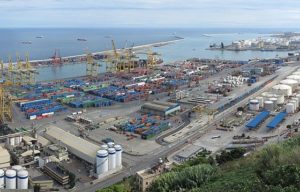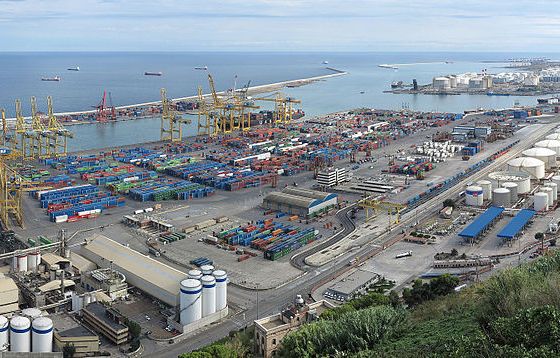 Since the middle of April, the Asia-North Europe westbound trade has taken a turn for the better with many carriers reporting full ships with cargo roll-overs occurring, igniting hopes of the start of a sustained recovery in demand and rates on this key ocean route.
Since the middle of April, the Asia-North Europe westbound trade has taken a turn for the better with many carriers reporting full ships with cargo roll-overs occurring, igniting hopes of the start of a sustained recovery in demand and rates on this key ocean route.
Between mid-February and mid-April headhaul volumes were generally perceived to have been quite soft, and across the whole of the first quarter, demand only perked up by 1.1%, but recent figures “perhaps suggest that the long slow decline of any growth in this trade may now have touched bottom,” said Drewry.
The maritime analyst in its latest report says, however, that it would be too premature to proclaim that the long-awaited recovery on the Asia-Europe trade is now well under way, citing the many counterarguments raised that this spike in demand will only be temporary.
For one, after the post-Chinese New Year slack season, several importers in Europe are inevitably going to have to restock. Moreover, with slow steaming now a feature of this trade, some retailers have taken to calling forward some of their peak season shipments normally moved between July and September, said Drewry.
Another counterargument is that some British importers had stocked up early for fear that a vote for the UK to leave the EU in the June referendum would immediately weaken the pound, making imports more expensive.
Similarly, some continental retailers have fast-tracked shipments in anticipation that a British exit could equally take its toll on the value of the euro.
Other merchants have sought to get cargo on the water ahead of the new container weighing regulations that are due to come into effect on July 1 and which some fear will initially cause disruption.
Another hindrance to any full-blown recovery in Europe is the seemingly continuing reticence of German consumers to spend more despite lower fuel costs, benign unemployment levels, and rising disposable income, said the report.
Creating a demand hike, too, is the recent supply squeeze created by various blanked sailings made in early May to coincide with the Golden Week holidays in the Far East, a couple of service cuts carried out, and some merchants reportedly reducing their shipments with the financially stricken Hanjin Shipping and Hyundai Merchant Marine.
“Current rollovers may therefore be more symptomatic of tight space rather than of a cargo boom,” said the report.
Data shows that westbound slot supply fell by 8.2% in April compared to a year earlier and the monthly count of some 867,000 TEUs was some 100,000 TEUs less than the record set in July last year. New ultra large container ships continue to arrive on this trade, with overall average vessel size at the beginning of this year up 15% to over 14,000 TEUs compared to the start of 2015.
“It is significant too that CMA CGM rescinded its earlier decision to transfer five 18,000 teu units from its flagship FAL1 service to the Transpacific US West Coast,” said Drewry.
On the other hand, carriers are determined to effect a more permanent supply reduction not just through void sailings but through complete service cuts as well. CKYHE removed their CES/NE8 loop from March 21, and a month earlier, the G6 partners laid up their Loop 6 service initially for 11 weeks, but extended it later by a further eight weeks and is not due to resume until July 7.
Efforts by the lines to increase spot market rates at the start of May met with a fair degree of success, even if it was followed by the customary slippage as the month progressed.
Rates rose to over US$1,300 and while they have since dropped back to $850, “there is a clear intent on behalf of the carriers to push further forward with the rate recovery program in June, with declarations to seek increases averaging $1,000 in one or two stages during the month,” said the consultant.
“Whether the current buoyant cargo movements from Asia prove to be a short-lived phenomenon or not, westbound 40ft spot rates are likely to stay above $1,000 until at least the end of the peak season in September,” said Drewry.
Photo: Alexandar Vujadinovic





